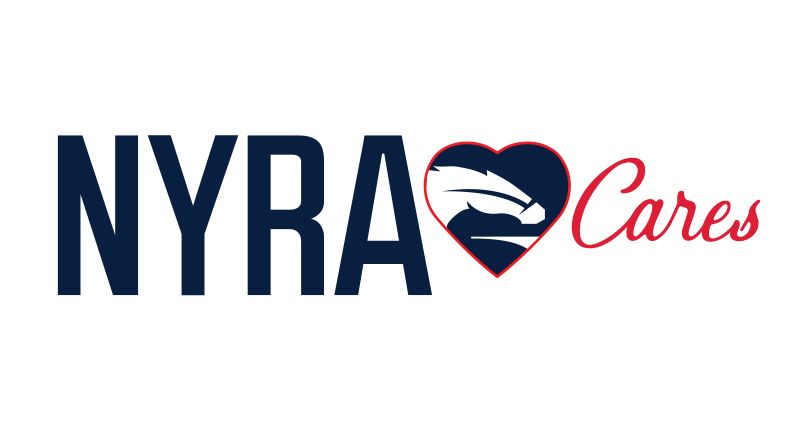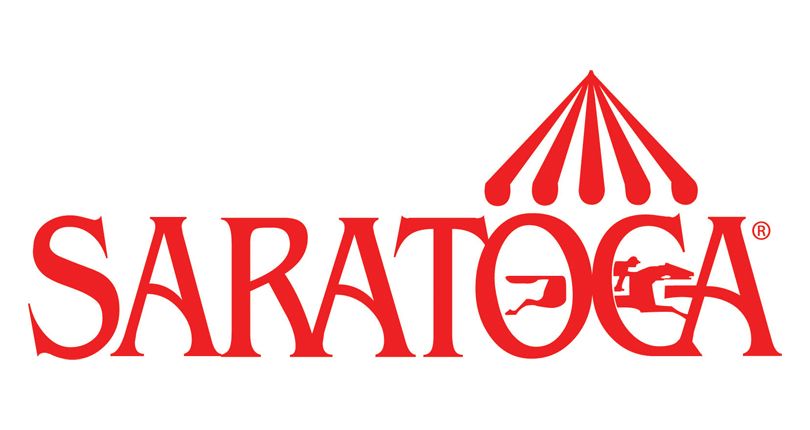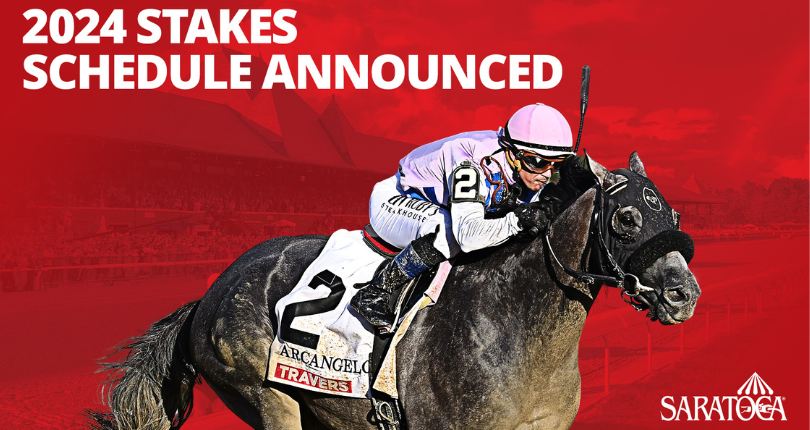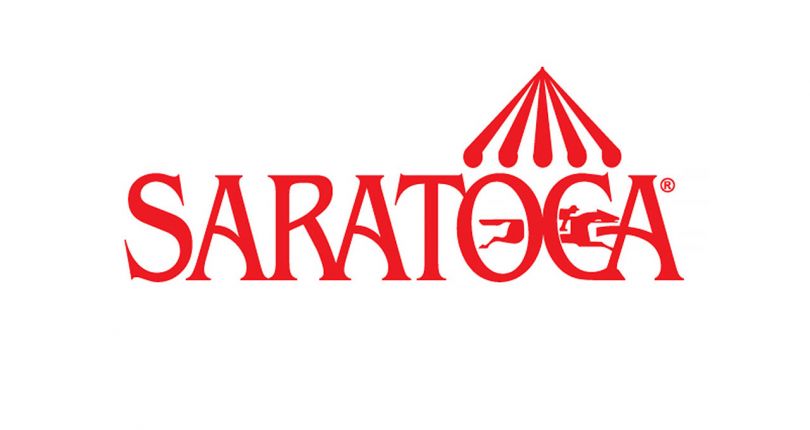
NYRA Cares: Thoroughbreds are helping veterans leave trauma behind
by NYRA Press Office
There’s a special charge that Steve Houghton in his position as program advisor for the Saratoga WarHorse Foundation experiences most every time he meets a fellow veteran enrolled in the organization’s intensive three-day connection process.
It’s not when Houghton goes to the airport to picks up the veteran or service member, many of whom are living with Post-Traumatic Stress Disorder (PTSD) and struggling to transition back to civilian life. Nor it is in the midst of the sessions in which veterans work with off-track thoroughbreds (OTTBs).
What resonates with Houghton is when he delivers the veteran back to the airport for their flight home and he can sense what he calls the beginning of their “transformation.” That’s when he can see the veterans starting to reestablish the trust that comes from working with horses – the kind this innovative rehabilitation organization has pioneered to help vets reclaim their lives.
One reason that Houghton can see the progress is because he’s a Saratoga WarHorse graduate himself. The retired U.S. Army Sergeant First Class served 20 years, 11 of which he was stationed in Kosovo, Iraq, Afghanistan and Kuwait. Surviving nine attacks and losing an eye from explosive devices during his military service, he returned to civilian life and just wanted to withdraw.
Houghton said his lingering physical and psychological wounds at times, “seemed insurmountable.” For a time, he was homeless, living out of his truck in Georgia. And though he attended treatment and support groups, nothing seemed to work. Finally, a military buddy who Houghton met in group therapy suggested that he attend the Saratoga WarHorse program.
So in March 2017, he did. Entering the round pen with the retired racehorse Party Favor was, “my miracle,” Houghton said. “I felt totally relieved right away. I literally felt I didn’t have anything to worry about. It was so powerful. I overcame my PTSD and was able to pull myself out of homelessness.”
Houghton is hardly alone. Since 2013, Saratoga WarHorse has worked with nearly 1,500 veterans who suffer from nightmares, depression, anger, withdrawal and other issues caused by trauma. Saratoga WarHorse operates at a Saratoga-area farm; and at satellite locations in Aiken, South Carolina and Baltimore County Maryland.
The Saratoga WarHorse program evolves over three days with an average of five participants. The program is available to veterans and service members from all branches of the military, regardless of when or for how long they served. There is no cost for veterans to participate; travel, lodging, meals and expenses are covered.
Saratoga WarHorse isn’t traditional therapy. It’s a therapeutic experience designed to help participants get past the physiological symptoms of Post-Traumatic Stress. It begins with classroom instruction, followed by the veteran entering a pen to meet the OTTB. The goal is to connect, to touch and make contact. By utilizing the silent language of the horse, a mutual trust and profound bond is established that goes beyond verbal communication.
Allison Cherkosly, executive director and CEO of Saratoga WarHorse, who also served in Afghanistan, said that process, which can take between five and 45 minutes, creates a profound personal connection between the veteran and horse, “unlocking” a part of the veteran that has been closed off for years. Though the duration of the connection process varies, it is for the most part, predictable, sequential and repeatable, she added.
“When I first started with Saratoga WarHorse, I almost couldn’t believe it,” Cherkosly said. “But the process triggers a relaxation response that happens when the horse is willing to connect with the veteran."
Cherkosly stressed that the experience can be beneficial as well for the horses, all of whom are OTTBs. “Like the veterans we serve, these retired racehorses are going through a transition period,” she said, “and the Saratoga WarHorse program helps them successfully adjust to life off the track and find purpose in their new lives.”
“It’s an authentic process,” Cherkosly said. “When they go in the round pen, the veteran is giving off nervous energy. The horses, prey animals, are intuitive and can smell the adrenaline rush. They’ll stay as far away as they can. The veterans have to work their way through the reaction.”
That’s what happened to Saratoga WarHorse graduate John. “I had never handled a horse before,” he said. “It was a challenge that I was excited to take on. I wanted to prove to myself that I was capable of trust and worth being trusted. My horse companion for the day, Done Done Done, was an athlete in his racing days. He and I were able to find common ground and mutual understanding. We both agreed that what we each needed during our time in the ring was each other."
For Houghton, the benefits continue. After going through the Saratoga WarHorse program, he joined the organization to help other vets and continue to heal himself. Today, he and his girlfriend Abby, also a “WarHorse” graduate, live on a farm in Wagener, South Carolina with five OTTBs and a donkey. Houghton is also pursuing a bachelor’s degree.
"Saratoga WarHorse is something that is so therapeutic," Houghton said. "I want every veteran to experience it. It works."
To learn more about Saratoga War Horse, visit: https://www.saratogawarhorse.org/
Getting to know…JoAnn Pepper
This month’s edition of Getting to know…visits with JoAnn Pepper and her husband, Mark, the owners & general managers of Old Friends at Cabin Creek, the Bobby Frankel Division, which is accredited by the Thoroughbred Aftercare Alliance (TAA) and is Saratoga County, N.Y.’s only thoroughbred retirement farm.
Old Friends at Cabin Creek provides dignified retirement for all racehorses, both known and unknown. Open year-round but only on Saturdays in the fall, it offers visitors an up-close and personal experience with its thoroughbred horses. Among the residents are Commentator, a two-time winner of the Whitney Handicap and the 2007 and 2008 New York Horse of the Year. Cabin Creek’s former resident, the celebrated Zippy Chippy, winless in 100 races, died in April at the age of 31.
JoAnn Pepper spoke while seated in the new “Zippy Chippy Pavilion,” built by Mark Pepper, next to the main barn.
Summer is always your busiest time of the year. How has this summer gone?
It’s been a little slower than usual, but still very nice. We’ve had a lot of kids and the horses really respond. Our major visitors are fans, a lot of whom come every year and build relationships with some of their favorite horses from the track.
That goes to the heart of your mission, doesn’t it?
Definitely. Our mission is to provide a dignified retirement for these horses and to continue to spread the word about aftercare.
Generally speaking, is word getting out about the importance of aftercare?
Yes. In the last 10 years, aftercare has slowly and steadily been heading in the right direction. The Thoroughbred Aftercare Alliance and other organizations have done a lot. And I believe that horses are being retired sooner so they can have second careers, which is wonderful and the way it should be.
A lot of people go into partnerships without realizing that horses can often live to 30. A horse can retire from the track at age 5, and then where are they going to go? They need to be retrained and find a home where they’ll be cared for and loved. But it doesn’t always happen that way, so we need sanctuaries like this one.
There are some who say earlier retirements aren’t good for racing because it doesn’t allow fans to form longtime attachments to racehorses. But do you think the trend of horse being retired earlier than a few decades ago is good?
I do. A horse retiring before too many injuries set in is a good thing. Younger horses who are injured can also heal faster and better.
Everything is different these days. Horses train harder today, whereas years ago, they wouldn’t train as hard while racing every week. Now, they’re racing once a month or so.
With Zippy Chippy’s passing, how has his longtime companion, Red Down South, adjusted?
“Red” is doing great. Physically, he’s in good shape; he raced only 32 times in his career. So after Zippy died, we gave him a few days by himself, and though it took a little while to find a horse who would suit him, we did with Bold Illusion.
Red prefers to have a companion, whereas others don’t. Commentator prefers to be alone, and Mr Cowboy does better by himself. But, Red with his new friend, is doing really well at 22.
*
NYRA and its horsemen are committed supporters of the TAA, which accredits, inspects, and awards grants to approved aftercare organizations using industry-wide funding.
Every owner competing at NYRA racetracks donates $10 per start to the TAA, helping to fund aftercare organizations that provide homes for retired racehorses. New York’s horsemen also donate 1.5 percent of the purchase price of every horse claimed at a NYRA track to TAA and the New York Thoroughbred Horsemen’s Association’s TAKE THE LEAD (TTL) program, which provides preliminary vet exams and treatment, as well as costs related to transportation and rehabilitation or retraining.
For more info on Old Friends at Cabin Creek, please visit: https://oldfriendsatcabincreek.com/
In the community…
Governor Hochul Designates Union Avenue in Saratoga Springs As 'Marylou Whitney Way'
In August, Governor Kathy Hochul designated a portion of the state highway system in the city of Saratoga Springs as the 'Marylou Whitney Way.'
"Marylou Whitney's years of dedication to Saratoga will live on forever, reflected in the work she did throughout her life," Governor Hochul said. "She was larger than life, a trailblazer of her time, and her memory will be a lasting legacy here and today I am honored to dedicate to her a piece of the city she so loved. I thank the Whitney family for their continued work here and I am grateful to be able to remember Marylou as the legend and friend she is to so many."
Regarding the importance of horse racing to New York State, Governor Hochul said:
“It's an important institution that is responsible for an industry that we're extremely proud of here in the State of New York. And I'll say that again, we're proud of this industry because there are very few states that can lay claim to the excitement, the energy, and all the jobs that are created by this energy, which is so important to me, personally.”
To learn more, visit https://www.governor.ny.gov/news/governor-hochul-d...
Serling honored with Marylou Whitney Award for commitment to the backstretch community
Andy Serling, the longtime New York Racing Association television analyst and handicapper, was honored in August by the New York Race Track Chaplaincy of America (RTCNYA) for his continuing devotion and support of the backstretch community at the organization’s 15th annual fund-raising brunch at Saratoga National Golf Club in Saratoga Springs, N.Y.
“Anyone who has been around our sport knows that the backstretch community is the lifeblood of our sport,” Serling said. “I greatly admire all those people who dedicate their lives to the care of Thoroughbreds and I’m immensely grateful and humbled by this honor. This award, of course, is even more special to me with Marylou Whitney’s name attached to it.”
The New York Race Track Chaplaincy serves the New York backstretch and farming community with children's enrichment, social service, recreational, and educational programming as well as non-denominational religious services.
Additional information about the New York Race Track Chaplaincy is available at rtcany.org.
A helping hand…
Support the New York Race Track Chaplaincy
The New York Racetrack Chaplaincy of America (NYRTCA) is a proud supporter of the backstretch communities of Belmont, Aqueduct, and Saratoga.
One way to assist the NYRTCA is via planned giving.
What is planned giving?
Planned giving means any donations which are planned in advance or scheduled on a regular basis.
Why should you consider planned giving?
Your partnership allows the NYRTCA to serve the men and women, and their families, who toil behind the scenes to make racing possible.
When you partner via planned giving you are letting the NYRTCA know this partnership means as much to you as it does to those are served and provides the ability to raise and broaden the level of service to make the budgeting process more concrete and helpful.
To learn more, please visit: https://www.rtcany.org/planned-giving








 Gambling Problems? The New York Racing Association encourages responsible wagering. If gambling is a problem for you or someone you care about, help is available 24 hours a day. Scan here to talk with someone now about your gambling. Or call toll-free 1-877-8-HOPE-NY.
Gambling Problems? The New York Racing Association encourages responsible wagering. If gambling is a problem for you or someone you care about, help is available 24 hours a day. Scan here to talk with someone now about your gambling. Or call toll-free 1-877-8-HOPE-NY.